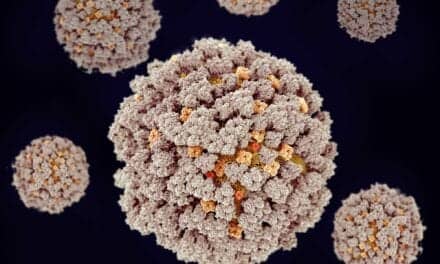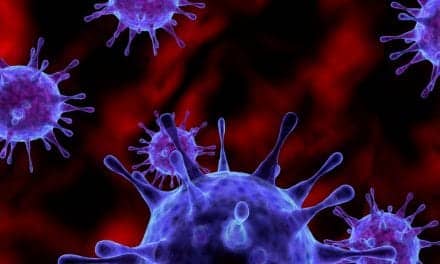Acute respiratory illnesses are the most common acute diseases in the United States.1 Respiratory viruses, including influenzas, parainfluenzas, respiratory syncytial virus (RSV), rhinoviruses, coronaviruses, and adenoviruses, cause the majority of these illnesses.2
Although these viruses are not new, the realization among health care professionals that they are an important cause of disease in immunocompromised patients and that morbidity and mortality rates are very high among these patients is relatively recent.
Community Viruses in Immunocompromised Patients
These community viruses might cause the common cold or a moderate case of the flu in healthy individuals, but in patients with damaged or weak immune systems, including those with cancer, bone marrow or organ transplants, and HIV infection, they frequently cause serious, life-threatening illness. Therapeutic options are limited and established viral pneumonia, for example, is difficult to treat in immunocompromised patients.
In the past, serious respiratory infection in immunocompromised patients was attributed to bacteria, fungi, protozoa, mycobacteria, and a variety of other opportunistic pathogens, with some attention focused on adenoviruses. A clear cause has not been identified, however, in 30% to 60% of pneumonias in immunocompromised patients; as a result, these illnesses have been identified as idiopathic pneumonia or pneumonia of unknown etiology, or have been attributed to regimen-related toxicity or acute respiratory distress syndrome.3
These illnesses have a significant impact on morbidity and mortality, reflected in problems related to influenza, such as secondary bacterial and fungal chronic sinusitis, secondary bacterial and fungal pneumonia, prolonged hospitalization, and high fevers of unknown origin, according to Richard Champlin, MD, chair of the Department of Hematology at the University of Texas, MD Anderson Cancer Center, in Houston.
Alerting Health Care Professionals
An effort is under way to alert health care professionals of the prevalence and seriousness of community respiratory virus infections among immunocompromised patients and to bring the latest methods of diagnosis, treatment, and prevention to their attention. This is especially relevant for RCPs, who have knowledge of and involvement with respiratory functioning, both theoretically and clinically, in their patients and the general population. Early diagnosis and intervention when patients are first infected are key; preventing new infections in both institutional and community settings is critical, says Estella Whimbey, MD, associate internist, section of infectious diseases, at the MD Anderson Cancer Center.
Diagnostic procedures, particularly for RSV, have become more aggressive and sophisticated in the past few years. An increasing number of clinicians and institutions have moved beyond obtaining a simple throat culture to routinely doing nasal sporangial aspirates or nasal sporangial washes combined with throat swabs, even in patients with minor upper respiratory tract illnesses. Using early warning tests and catching a budding RSV infection are necessary, experts caution, because these infections progress so quickly and can be so dangerous to immunocompromised patients.
Early treatment with ribavirin (a broad-spectrum antiviral for inhalation solution) can arrest RSV and turn the tide of infection. Ribavirin should be administered as soon as a diagnosis of RSV infection is confirmed, preferably within 3 days of the onset of symptoms when the viral load is at its peak. It should be noted that this drug has been licensed for the treatment of RSV respiratory disease in children and mechanically ventilated patients only.4 A new agent, palivizumab, is a monoclonal antibody indicated for prophylaxis against RSV infection in pediatric patients at high risk for developing RSV infection, such as premature infants and infants with bronchopulmonary dysplasia.5
Amantadine and rimantadine are used to treat influenza and early pneumonia, although therapy with these drugs is limited because they are active only against influenza type A, not type B. They are also available only in oral form, and resistant viruses emerge quickly in both immunocompetent and immunocompromised patients treated with drugs alone, Champlin says.
Prevention Is the Best Treatment
As with most public health problems, the best treatment is prevention. These viruses are extremely contagious, and immunocompromised patients are fairly defenseless. Annual vaccination of patients, families, and health care workers in October and November, before the flu season, is important. Many hospitals are stepping up their infection-control programs, targeting both health care workers and visitors who may bring infection in from the community. Simple universal precautions, such as frequently reminding treatment professionals and visitors to wash their hands often, and requiring workers to wear masks and gloves, can help tremendously in controlling infection in institutional settings. Keeping immunocompromised patients healthy when they are out in the community, however, continues to be a challenge.
Community Viruses in AIDS Patients
In spite of impressive recent strides in HIV/AIDS research and treatment, relatively little is known about the specific impact of community respiratory infections on HIV-infected individuals. It seems logical that immune deficiencies resulting from HIV infection probably result in more severe illnesses than among immunocompetent individuals because HIV damages both humoral and cellular defenses, but little research has been done to date in this patient population. One expert6 speculates that since most HIV-infected patients acquired the infection as adults or adolescents, they already had experienced most of the common community respiratory infections, and, therefore, had some immunity in place. For this reason, respiratory infections may be more dangerous to children with HIV infection who have not had the opportunity to acquire this immunity.
Experts call for more research in several areas. Although moderate to severe, and even some fatal, lower respiratory viral illnesses have been reported among HIV-infected patients, in general the clinical presentation in this population has been fairly similar to that in individuals without HIV infection. The only exception is fulminant, often fatal, disseminated adenovirus infection in adults and children with HIV infection.6
A second area in need of further investigation is the documented, prolonged shedding of respiratory viruses for weeks, even months, among HIV-infected adults and children. Prolonged shedding seems to be fairly common in this population compared with healthy individuals, probably because impaired cells are not able to clear respiratory viruses effectively. This new understanding has important implications for infection control in institutions where HIV-infected people are treated, as well as in group settings such as nursing homes and child care centers.
Finally, there is some evidence that respiratory virus infection may result in the replication of HIV-1 in adults, leading to progression of their disease.6 Further study is needed to determine exactly what impact respiratory viruses have on individuals with HIV infection and the development of that infection into AIDS.
Nancy Bell is a contributing writer for RT Magazine.
References
1. Vital and Health Statistics. Current estimates from the National Health Interview Survey. Hyattsville, Md: National Center for Health Statistics; 1995. DHHS publication no (PHS) 96-1521.
2. Couch RB, England JA, Whimbey E. Respiratory viral infection in immunocompetent and immunocompromised persons. Am J Med. 1997;102:2-9.
3. Whimbey E. Introduction. Am J Med. 1997;102:1.
4. Englund J, Piedra PA, Whimbey E. Prevention and treatment of respiratory syncytial virus and parainfluenza viruses in immunocompromised patients. Am J Med. 1997;102:64.
5. Impact-RSV Study Group. Palivizumab, a humanized respiratory syncytial virus monoclonal antibody reduces hospitalization from respiratory syncytial virus infection in high-risk infants. Pediatrics. 1998;102:531-537.
6. King JC. Community respiratory viruses in individuals with human immunodeficiency virus infection. Am J Med. 1997;102:19-23.









